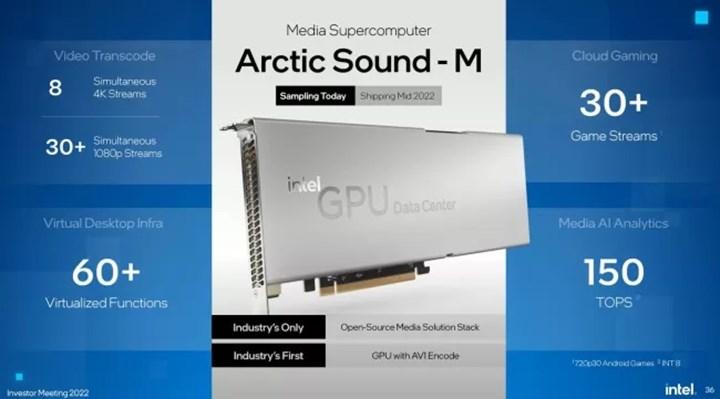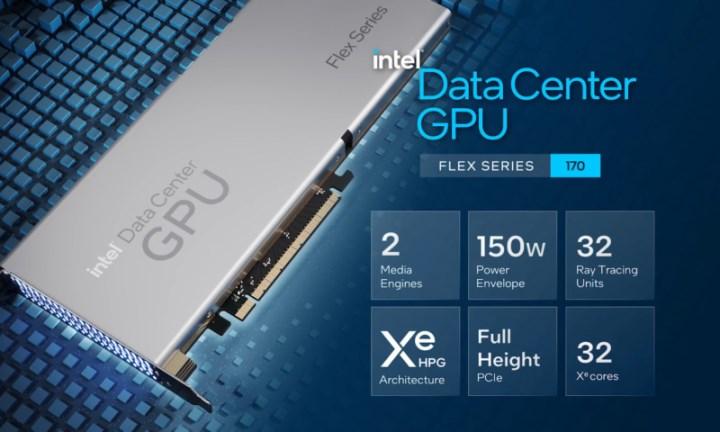
The graphics accelerators that Intel started to ship to visual processing cloud infrastructures as Arctic Sound-M at the beginning of the month are named Intel Data Center GPU Flex with a new decision. Offering 5X media transcoding throughput performance and up to 68 simultaneous cloud game streams, the Flex series is designed to meet the needs of intelligent visual cloud workloads.
Intel Data Center GPU Flex series innovations
Featuring the industry’s first hardware-based AV1 encoder in a data center graphics accelerator, the GPU Flex series delivers five times the media transcoding throughput performance and twice the decoding throughput performance at half the power of competitive solutions.
Intel NUC 13 Extreme is coming
In addition to broad support for popular media tools, APIs, frameworks and the latest codecs, it offers more than 30 percent bandwidth optimization3 for significant total cost of ownership (TCO) savings.
It also helps lower and optimize the total cost of ownership for a variety of cloud workloads such as media delivery, cloud gaming, artificial intelligence, metaverse and other emerging visual cloud use cases.
Powered by Intel’s Xe-HPG architecture and supported by a broad ecosystem of hardware vendors and software developers, these GPUs enable AI inference workloads, from media analytics to smart cities to medical imaging, to power CPUs and GPUs without confining developers to proprietary software. It enables flexible scaling between .

Why is the Intel Data Center GPU Flex series important?
Media processing, media distribution, AI image extraction, cloud gaming and desktop virtualization are proliferating in data centers. As a result, the data center GPU silicon market segment for the visual cloud is predicted to reach $15 billion by 2026. This rapid increase will come in an industry beset by reliance on proprietary and licensed coding models such as CUDA for GPU programming.
The Flex series solution stack overcomes these limitations and offers significant advantages over alternative solutions, increasing flexibility, scalability and power consumption. By supporting more subscribers with fewer servers, it helps ensure a lower total cost of ownership for solution providers.